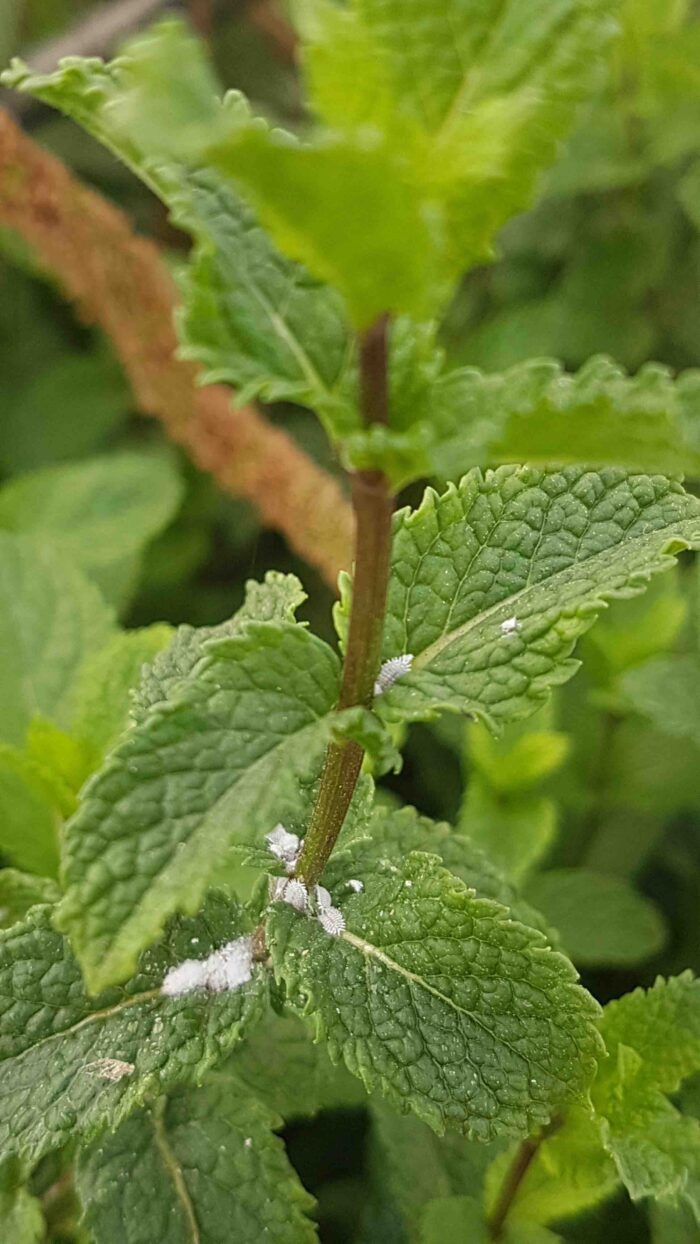Mealybugs
Apple, grapevines, peppers, eggplant, basil, mint, sage, papaya, cucumber, potatoes, barbary fig (and other cactaceae members), rose, mango, pineapple, squash, citrus, sugarcane, coffee, palms, cassava, sunflower, pear, blueberry, raspberry, mulberry, banana, and cocoa
They feed on the phloem by sucking sap from plants. Symptoms appear as small white patches on stems and fruits, followed by the formation of honeydew and the development of sooty mold near infected areas. Mealybugs are known for their ability to transmit plant viruses and can cause heavy losses to economically important crops.
Considered to be soft scale insects, mealybugs derived their name from their appearance. Usually, mealybugs are covered with a sticky wax floury or cornmeal-like whitish powder. Some species reproduce sexually, while others are parthenogenic. Mealybugs may be oviparous, viviparous, or ovoviviparous. Their eggs are usually laid in loose masses of cottony wax ovisacs. The flowering and fruiting phases of plants help support a larger mealybug population.
Mealybug species of economical importance include: pink hibiscus mealybug, miscanthus mealybug, papaya mealybug, vine mealybug, and citrus mealybug.
Management of mealybugs varies depending on the host plant and to some extent, the genus itself. Nevertheless, some measures are generalized.
Monitoring: As the fruit ripens, it becomes more attractive to mealybugs. At this point, begin scouting the field regularly and on a weekly basis.
Using traps to monitor: Monitoring systems can help you decide when to apply insecticides. Population levels can be reduced or controlled by mass trapping, mating disruption, or lure and kill. The success of these methods depends on the availability of the pheromone and its quality.
Controlling ants: Ants assist in the spread and establishment of mealybug colonies, are attracted to the honeydew, and can have a suppressive effect on natural mealybug enemies.
Sanitation: Keep the crops’ close surroundings and environmental conditions neat by removing weeds and plant debris as much as possible.
In vines: Mealybug populations overwinter primarily under the bark of the trunk that keeps them relatively safe and more protected against spraying applications. As berries ripen and sugar levels begin raising, mealybugs start moving towards the berry clusters and infestation upon fruits will likely begin near the vine cordon. For these reasons, a common practice in vines is peeling up the bark along the stems – from cordon to bottom. This will expose mealybugs and make them more vulnerable to sprayable insecticides.
The following are generic names of insecticides used in one or more parts of the world: imidacloprid, thiamethoxam, acetamiprid, thiachloprid, sulfoxaflor, dichlorvos, spirotetramat, buprofezine, chlorpyrifos, and synthetic terepenes extract of chenopodium.
Oils such as neem, tea-tree and mineral oils and detergents\soaps designed especially for agricultural usage.
Commercially available beneficial insects such as the Anagyrus pseudococci, Leptomastix, dactylopii and larval stage of the coccinellid predator Cryptolaemus montrouzieri.
*Note: Adequate control of ants is highly recommended before the release of any natural mealybug enemies.
*Names marked in red are considered to be highly poisonous to beneficial insects.
*Names marked in green are considered to be organic and IPM (integrated pest management) compatible.
Image Gallery


